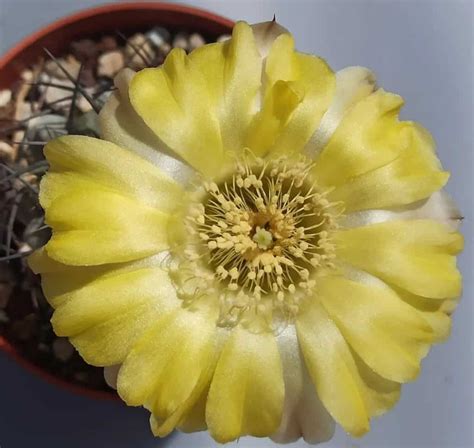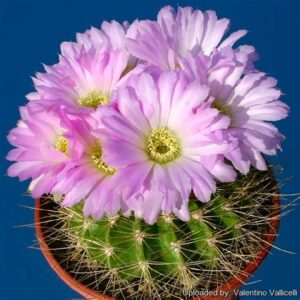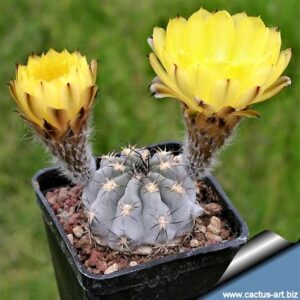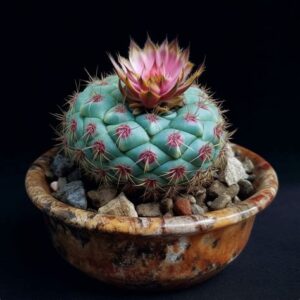Acanthocalycium glaucum, a breathtaking member of the Cactaceae family, has become a favorite among succulent enthusiasts due to its unique morphology and relatively straightforward care demands. This species boasts a delightful appearance characterized by its globular shape and intricate spines. To cultivate Acanthocalycium glaucum successfully, understanding its natural habitat, growth requirements, and specific care guidelines is paramount.
In this article, we will explore the essentials of Acanthocalycium glaucum care, from its ideal environmental conditions and watering practices to common pests and diseases that may pose a threat. Whether you are a seasoned cactus aficionado or a newcomer to plant care, this comprehensive guide aims to provide valuable insights into nurturing this remarkable succulent.
Environmental Requirements: Creating the Perfect Habitat
Understanding the native environment of Acanthocalycium glaucum is crucial for recreating suitable conditions in your home or greenhouse. Native to the arid regions of Argentina, this cactus thrives in climates characterized by low humidity, ample sunlight, and well-drained soils. When planning your growing environment, consider the following elements:
Light Considerations
Light plays an essential role in the health and vitality of Acanthocalycium glaucum. This cactus flourishes in bright, direct sunlight for a minimum of four to six hours daily. Insufficient light can lead to etiolation, where the plant stretches unnaturally and ultimately weakens. Ideally, placing your cactus near an unobstructed south or west-facing window will provide the optimal exposure it craves. However, be cautious of intense midday sun, which could scorch the delicate structure of younger plants.
When transitioning your cactus to a new light source, make gradual adjustments to avoid sunburn. If the growth of your Acanthocalycium glaucum starts to pale, this may signal a need for more sunlight.
Temperature Tolerance
Acanthocalycium glaucum thrives within a temperature range of 70°F to 100°F during the growing season. However, this hardy cactus can withstand cooler temperatures down to 50°F during its dormant period in winter. It is crucial to store the plant away from cold drafts or low-temperature environments to preserve its health. Ideally, temperatures should remain moderate, avoiding extremes that could stress the plant.
Humidity Preferences
Like many cacti, Acanthocalycium glaucum prefers a low-humidity environment. This species tends to fare best in humidity levels ranging from 30% to 50%. High humidity can lead to issues like root rot, particularly when combined with overwatering. Therefore, ensure your growing space has proper ventilation. A small fan can help circulate air and maintain the desired low humidity levels.
Watering Techniques: Understanding the Balance
Watering Acanthocalycium glaucum effectively involves striking a delicate balance. Overwatering is one of the most common challenges faced by cactus enthusiasts, often leading to serious ailments like root rot. Here are some tips to establish an efficient watering routine:
When to Water
During the active growing season, typically in spring and summer, water your Acanthocalycium glaucum more frequently—approximately once every two weeks—allowing the substrate to dry out completely between sessions. During the winter months, when the cactus enters dormancy, it requires less water, with intervals extending to every four to six weeks. It is critical to observe the soil before watering, as the cactus can often go longer without moisture than one might expect.
Water Quality
Utilizing distilled or rainwater is ideal, as it contains fewer minerals and chemicals than tap water, which can accumulate in the soil over time. If tap water is unavoidable, allow it to sit for 24 hours to let chlorine dissipate. Ensure watering is done thoroughly, allowing excess water to escape the drainage holes in the pot. This practice prevents stagnant water, which could jeopardize your cactus’s health.
Soil and Potting: Give Your Cactus a Solid Foundation
The choice of soil and container for Acanthocalycium glaucum is equally crucial. These cacti thrive in well-draining substrates designed specifically for succulents or cacti. Here are some factors to consider when choosing soil and pots:
Soil Composition
A suitable soil mix for Acanthocalycium glaucum should be gritty, comprising components such as coarse sand, perlite, and a small amount of organic matter. A good mix often includes about 50% mineral components to enhance drainage while still retaining enough moisture for the cactus’s needs.
Pot Selection
Choosing the right pot is essential for regulating moisture levels. Opt for a pot with drainage holes to allow excess water to escape. Terracotta pots are an excellent choice due to their porous nature, promoting airflow to the roots and preventing moisture buildup. Ensure that your pot is only slightly larger than the cactus itself, as too much excess space can retain unwanted moisture.
Pest and Disease Management: Staying Vigilant
Despite their resilience, Acanthocalycium glaucum is not immune to pests and diseases. Maintaining a vigilant approach to care can prevent common issues like infestations and infections:
Common Pests
Watch for infestations of common pests such as mealybugs, spider mites, and scale. These pests can damage the cactus, absorbing sap and weakening the plant. A regular inspection of your plants can help catch these nuisances early. If pests are detected, treatment options include insecticidal soap or neem oil, used according to product instructions.
Disease Prevention
Root rot is a primary concern for Acanthocalycium glaucum. To prevent this, ensure there is proper drainage and avoid overwatering. If rot is suspected, remove the cactus from its pot, trim away the affected roots, and allow the remaining roots to dry before repotting in fresh, dry soil. Fungal infections can also occur and may manifest as dark spots or mold on the cactus surface. Remove infected areas quickly and provide adequate airflow to promote curing.
Conclusion: Enjoying the Beauty of Acanthocalycium Glaucum
In summary, Acanthocalycium glaucum is an enchanting cactus that requires careful consideration of its environmental needs, watering habits, soil composition, and pest management strategies. By creating a suitable habitat and implementing appropriate care techniques, enthusiasts can enjoy the captivating beauty of this unique cactus for years to come. This resilient species not only adds aesthetic appeal to a collection but also offers a rewarding challenge for even the most dedicated horticulturists. With patience and attention to detail, you can cultivate a thriving Acanthocalycium glaucum that will stand out in any plant ensemble.





Leave a Comment